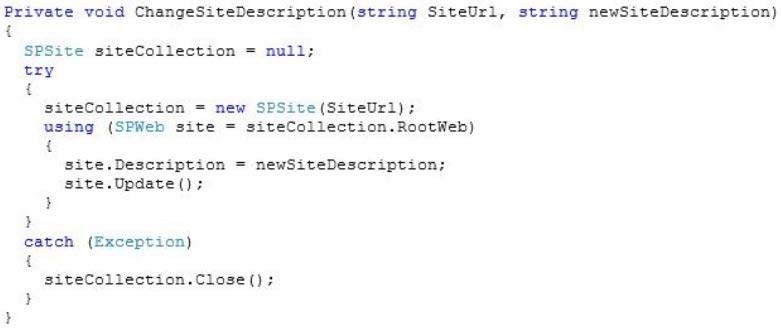

A company uses SharePoint for internal collaboration. SharePoint is deployed on a server farm with a single front-end server, a single application server, and a dedicated database server.
You review existing Web Parts that read from and write to SharePoint lists. You find the following code in one of the utility classes and notice memory leaks in the method.
You need to ensure that there are no memory leaks in the method.
What should you do?
Comments